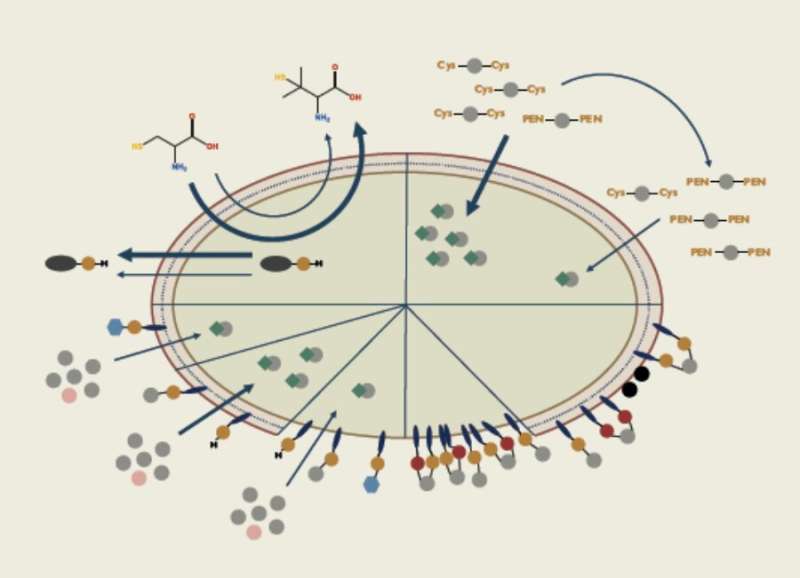This article has been reviewed according to Science X's editorial process and policies. Editors have highlighted the following attributes while ensuring the content's credibility:
fact-checked
trusted source
proofread
How a better understanding of mercury transformation can make ecosystems safer

A new study at Umeå University provides insight into how mercury transforms into its more toxic form, methylmercury, with the help of small sulfur-containing substances known as thiols.
Mercury spread in the environment is a critical issue, due to the severe effects on human health and ecosystems. The main mercury exposure for humans comes from consuming fish with elevated mercury concentrations, especially in the form of methylmercury. Most of the methylmercury in the environment is formed by specific microorganisms by transforming mercury.
Mareike Gutensohn, at the Department of Chemistry at Umeå University, has explored how small sulfur-containing substances, called thiols, influence this transformation. Thiols can be found dissolved in oxygen-free waters or within the surface of cells, as part of proteins, and they play a critical role in forming methylmercury since they can attach to mercury and affect how easily it is transformed or absorbed by microorganisms.
Monitoring the environment is important
In her thesis, she has investigated systematically the combined effect of chemical and biological factors on the formation of methylmercury and the mechanistic behind it. The study unveiled that the formation of dissolved thiols, tied to cell metabolism, leads to enhanced production of methylmercury.
"The formation of both thiols and methylmercury heavily depends on the metabolic activity of microorganisms. Interestingly, the composition and concentration of the formed thiols significantly impact the potential for methylmercury formation. This underlines the importance of monitoring the formation of thiols within the environment," says Mareike Gutensohn, doctoral student at the Department of Chemistry.
The research also provided the first systematic characterization of the outer and inner cell membranes of the studied microorganism, with respect to thiols within the surface of the cells. For this, Mareike Gutensohn used advanced spectroscopic techniques known as X-ray absorption spectroscopy, a powerful method to study cell-mercury interaction.
Complex relationship
The characterization unveiled variations in thiol concentration across the cell membrane, shedding light on the complex relationship between thiols and mercury transformation.
"While our understanding of thiols' role in methylmercury formation has significantly improved, there's still much to explore, particularly the role and implications of the differences in thiol concentration within the cell surface," says Mareike Gutensohn.
This study advances our understanding of the complex interplay of chemical and biological factors impacting mercury's transformation into methylmercury. This breakthrough in scientific understanding helps predict and control methylmercury formation, contributing to a safer and healthier ecosystem.
More information: Unraveling the importance of thiol compounds on mercury speciation, uptake and transformation by the iron-reducer Geobacter sulfurreducens. umu.diva-portal.org/smash/reco … anguage=sv&pid=diva2%3A1754747&dswid=-6977
Provided by Umea University




















